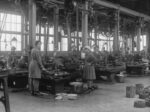Could you build our base in Antarctica?
Antarctica New Zealand is looking for a construction partner for the Scott Base Redevelopment project. But this is a job interview with a difference: the selection process involves a trip to Antarctica. “This is no junket though”, says Senior Project Manager Simon Shelton. “We understand that very few people have been to Antarctica so we want to work with the industry to familiarise them with the environment, show them Scott Base and help them understand any perceived commercial risk.” Over the next two years, the design of the proposed new base will be completed. This involves employing a main contractor organisation to work with Antarctica New Zealand and their design consultants to confirm how best to deliver the project. Registrations of Interest are now open on the Government Electronic Tenders Service website, GETS. Shortlisted applicants will be taken to Scott Base in February to experience the environment and the unique logistical requirements involved with safely living, working and building in Antarctica. Mr Shelton says Antarctica New Zealand is looking for an innovative organisation to safely and effectively deliver a complex project. “Even little things are important to know in Antarctica, like what clothing is required to work outside, how people and materials get there and back and how cold it really is,” he says. Antarctica New Zealand General Manager Engineering Matt Johnson says it’s an important project in a remote and challenging environment. “The redevelopment of Scott Base is the largest project ever undertaken by Antarctica New Zealand. “This is an opportunity for a construction company to be part of New Zealand’s legacy in Antarctica and to help support our world-leading science programme. “We’re looking for an organisation with the ability to deliver complex and challenging projects, a strong commitment to environmental stewardship, one that values the power of teamwork […]










